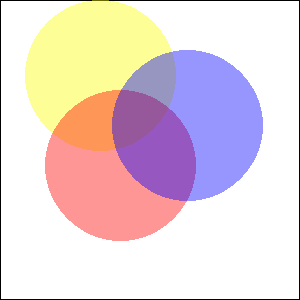If you only wish to extract the alpha value for a color, you can simply extract it like so:
<?php
$color = imagecolorat($im, 50, 50);
$alpha = $color >> 24;
?>
It actually shifts off the first 24 bits (where 8x3 are used for each color), and returns the remaining 7 allocated bits (commonly used for alpha)
imagecolorallocatealpha
(PHP 4 >= 4.3.2, PHP 5, PHP 7)
imagecolorallocatealpha — Allocate a color for an image
Opis
$image
, int $red
, int $green
, int $blue
, int $alpha
) : int
imagecolorallocatealpha() behaves identically to
imagecolorallocate() with the addition of the transparency
parameter alpha.
Parametry
-
obraz -
Zasób obrazu, zwrócony przez jedną z funkcji tworzących obrazy, taką jak imagecreatetruecolor().
-
red -
Wartość składowa czerwonego.
-
green -
Wartość składowa zielonego.
-
blue -
Wartość składowa niebieskiego.
-
alpha -
A value between 0 and 127. 0 indicates completely opaque while 127 indicates completely transparent.
red, green
and blue parameters are integers
between 0 and 255 or hexadecimals between 0x00 and 0xFF.
Zwracane wartości
A color identifier or FALSE if the allocation failed.
Ta funkcja może
zwrócić Boolean FALSE, ale może też zwrócić wartość innego typu niż Boolean, która oznacza
wartość FALSE. Aby uzyskać więcej informacji proszę zapoznać się z rozdziałem Typy logiczne.
Można używać operatora ===
do testowania zwracanych wartości przez tę
funkcję.
Rejestr zmian
| Wersja | Opis |
|---|---|
| 5.1.3 |
Returns FALSE if the allocation failed. Previously
-1 was returned.
|
Przykłady
Przykład #1 Example of using imagecolorallocatealpha()
<?php
$size = 300;
$image=imagecreatetruecolor($size, $size);
// something to get a white background with black border
$back = imagecolorallocate($image, 255, 255, 255);
$border = imagecolorallocate($image, 0, 0, 0);
imagefilledrectangle($image, 0, 0, $size - 1, $size - 1, $back);
imagerectangle($image, 0, 0, $size - 1, $size - 1, $border);
$yellow_x = 100;
$yellow_y = 75;
$red_x = 120;
$red_y = 165;
$blue_x = 187;
$blue_y = 125;
$radius = 150;
// allocate colors with alpha values
$yellow = imagecolorallocatealpha($image, 255, 255, 0, 75);
$red = imagecolorallocatealpha($image, 255, 0, 0, 75);
$blue = imagecolorallocatealpha($image, 0, 0, 255, 75);
// drawing 3 overlapped circle
imagefilledellipse($image, $yellow_x, $yellow_y, $radius, $radius, $yellow);
imagefilledellipse($image, $red_x, $red_y, $radius, $radius, $red);
imagefilledellipse($image, $blue_x, $blue_y, $radius, $radius, $blue);
// don't forget to output a correct header!
header('Content-Type: image/png');
// and finally, output the result
imagepng($image);
imagedestroy($image);
?>
Powyższy przykład wyświetli coś podobnego do:

Przykład #2 Convert typical alpha values for use with imagecolorallocatealpha()
Usually alpha values of 0 designate fully transparent pixels, and the alpha channel has 8 bits. To convert such alpha values to be compatible with imagecolorallocatealpha(), some simple arithmetic is sufficient:
<?php
$alpha8 = 0; // fully transparent
var_dump(127 - ($alpha8 >> 1));
$alpha8 = 255; // fully opaque
var_dump(127 - ($alpha8 >> 1));
?>
Powyższy przykład wyświetli:
int(127) int(0)
Zobacz też:
- imagecolorallocate() - Allocate a color for an image
- imagecolordeallocate() - De-allocate a color for an image
User Contributed Notes 3 notes
When working with transparency, avoid imagecreate() and use imagecreatetruecolor() instead. Transparency effects may not work as expected within a palette-based image.
If you need to calculate the integer representation of a color with an alpha channel, without initialising an image and using the imagecolorallocatealpha function. Then this function might be of some help:
<?php
function alphaColor($hexColor,$alpha)
{
return bindec(decbin($alpha).decbin(hexdec($hexColor));
}
echo alphaColor("FFFFFF",127);
?>